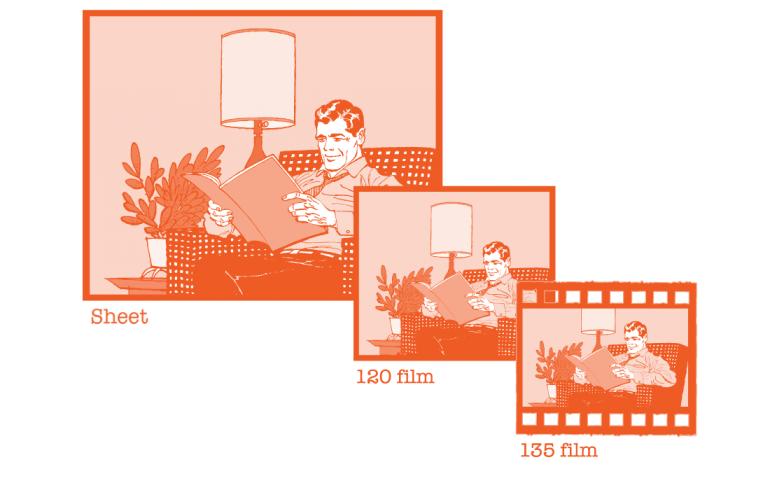An Introduction to Film Types & Formats
If you’re new to film photography and just starting to dabble in the wonderful world of film, there’s a lot of foundational knowledge and jargon about the medium you’ll want to understand. Even if you’re a seasoned pro, it’s easy for the basics to escape you as your focus shifts to developing your artistic vision.
To give you a hand, Richard Photo Lab whipped up a little quick-reference blog defining some of the foundational elements of film formats! Use it as you start experimenting with film, or if you’re in need of a few refreshers (plus some additional deets you may not have known).
Psst... Instead of listing these definitions alphabetically, we’ve grouped them into categories so you can easily compare them.

NEGATIVE FILM VS REVERSAL FILM
NEGATIVE FILM: Captures images as a “negative”, in which colors and values are inverted. Good for preserving details in high-contrast situations.
REVERSAL FILM: Also known as “slide film”, it captures images as a “positive”, replicating color and values directly. Because of this, it captures a rich range of colors. It’s also quite clear, with less grain than negative film.
FILM SIZES
135 FILM: Also referred to as 35mm film (the width of the negative), although that designation is typically reserved for 35 mm cinema stock. The term 135 actually refers to the metal cassette the roll of film is enclosed within.
Standard frame size is 36x24mm, with a standard of 36 exposures. The film is perforated on the edges so that it may be wound to and from one spool.
120 FILM: Much larger than 135 film, it is 61mm wide. The larger size allows images to appear less grainy as they are enlarged.
Standard frame size and number of exposures are:
6x4.5cm/16 exposures
6x6cm/12 exposures
6x7cm/10 exposures.
No perforated edges—the film goes from one spool to another. Film has protective backing paper on it.
220 FILM: Identical to 120 film, but with 1) twice as many frames per roll, and 2) NO protective backing paper. The lack of backing paper allows the longer film to fit on the same sized spool as 120 film, and the resulting thinner film requires a different pressure plate to achieve the best focus. Some cameras require a separate insert for this film type, while others come with different camera settings to accommodate both 120 and 220.

MEDIUM FORMAT: Film (and camera) type in which a single frame is larger than 135 film (36x24mm) but smaller than 4x5 inches. Typically 120 or 220 film types.
LARGE FORMAT: Film (and camera) type in which a single frame is 4x5 or larger (5x7, 8x10, etc). The film is also known as “sheet film”. Because the film is larger, the subsequent images can be printed larger without as much grain.
PROCESSING DESIGNATIONS
C-41: The most popular chemical developing process for color negative films. Color film has multiple layers of light-sensitive emulsion, each being sensitive to a different color.
B/W: Black and white film, which has its own specific developing process (different from that of color film). Black and white film typically has only one layer of light-sensitive emulsion that is only sensitive to the value (or density) of light, not the color.
E-6: The chemical developing process used for color reversal (slide) film. E-6 film has multiple layers of light-sensitive emulsion; during processing, multiple developer baths are used, as well as a reversal bath that turns the negative silver image on each layer into a positive image.
CROSS PROCESSING: Deliberately processing film using a different chemical process than the film is designated for. Typically used with E6 film in C-41 chemistry to increase contrast and generate random color shifts.



